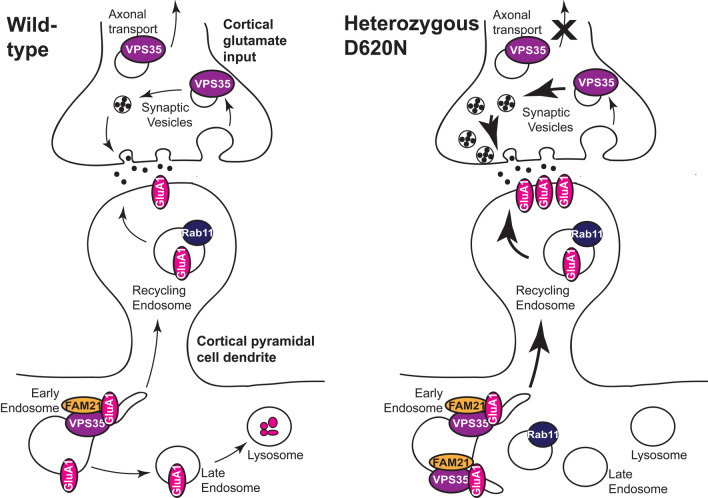Fig. 5.
Working model of increased surface AMPAR expression in D620N heterozygous mutants. In wild-type cells, postsynaptic VPS35 traffics GluA1-containing AMPARs. At the drosophila neuromuscular junction, VPS35 localizes to large endocytic structures resembling bulk-endocytosed membrane, raising the possibility that it participates in SV regeneration [25]; however, in mammalian neurons it localizes to only a subset of terminals [22] and retromer deficiency has no effect on SV endo- or exocytosis [22] or neurotransmitter release [16, 21]. Thus, we propose that presynaptic VPS35 may participate in recycling or retrograde transport of presynaptic receptors, channels, and/or SV proteins. In heterozygous neurons, there is increased abundance of endosomal structures positive for VPS35 and FAM21, accumulation of Rab11 + ve recycling endosomes, and increased surface expression of GluA1, thus we propose that the D620N mutation causes increased surface recycling of GluA1. Given the proposed presynaptic functions of retromer, we hypothesize that the observed increase in the probability of glutamate release is the result of either increased SV regeneration by retromer, or complex alterations to the recycling and axonal trafficking of presynaptic proteins by retromer

